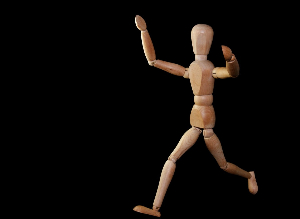Osteoarthritis and joint replacement: Everything you need to know!
Published 15 Jan 2022 • By Claudia Lima
Osteoarthritis is the most common joint disease and is characterised by the destruction of the cartilage. All joints can be affected.
In the UK, about 8.5 million people suffer with osteoarthritis and the number is expected to increase due to longer life expectancy and the number of overweight and obese people.
In which cases is joint replacement necessary? What do you need to know about joint replacement?
We explain it all in our article below!

What is osteoarthritis? What symptoms does it cause? What are the risk factors?
Osteoarthritis is a disease of the cartilage and the adjacent tissues which allow the joints to slide over each other. The cartilage loses thickness, cracks and can disappear; this provokes the so-called "mechanical" pain, which occurs when the joints are put into motion and lessens or disappears completely when they are at rest. Other symptoms include joint stiffness in movement and loss of joint function.
This condition is characterised by the presence of flare-ups, and mostly affects the joints of the spine, knees, hips, wrists and fingers. Osteoarthritis can lead to swelling of the joints, and for some people it means suffering from morning stiffness.
The exact causes of cartilage degradation are not well known and are still the subject of medical research. However, some risk factors have been identified:
- Age,
- Sex (women are protected by sex hormones, until menopause),
- Genetic predisposition,
- Metabolic abnormalities related to diabetes or obesity,
- Repeated traumas (e.g. violent sports) or repetitive movements (at work),
- Pressure on the joints due to weight.
Osteoarthritis is an unpredictable disease - it can progress rapidly over a few years, meaning that, for example, the patient requires joint replacement, or it can progress slowly, provoking no disability.
How is osteoarthritis diagnosed and treated?
The diagnosis of osteoarthritis is based on a clinical examination following reports of mechanical pain. X-rays of the joint(s) can confirm the diagnosis. New imaging techniques will soon make it possible to diagnose osteoarthritis at an early stage, and a team of researchers is following a promising lead.
Today, there is no drug that can cure osteoarthritis. The aim of OA treatment is to slow down the progression of the disease, treat pain and improve joint comfort.
Different approaches exist to relieve the symptoms:
Non-pharmacological approach
Doctors advise lifestyle changes and dietary measures such as adjusting one's diet and engaging in appropriate physical activity.
Doctors may also prescribe physiotherapy sessions for stretching, muscle strengthening and posture improvement, or recommend the use of occupational therapy equipment. Baths in thermal water are sometimes suggested as well.
Pharmacological approach
Painkillers (Paracetamol, Tramadol®), oral or local non-steroidal anti-inflammatory drugs or NSAIDs (Diclofenac®, Voltarol®) and intra-articular corticosteroid injections, also known as infiltration therapy, can be prescribed. Hyaluronic acid injections are also used to lubricate the joints, and saline injections allows for arthroscopic joint lavage (washout) to be performed to remove cartilage debris.
Surgery
Various types of surgery are effective in treating osteoarthritis and are prescribed as a last resort when all other treatments have failed:
- Arthroscopy: to treat lesions inside a joint without opening it
- Reconstructive surgery: to correct certain bone defects, responsible for the abnormal morphology of the joint
- Arthrodesis: joint fusion surgery, to lock the joint in an appropriate position
- Joint replacement: necessary for certain joints such as the knee and the hip, when functional discomfort and pain are too great, and walking is no longer possible.
Arthroplasty, or joint replacement
A damaged joint can be replaced by an artificial one, also called a prosthesis. A prosthesis is a device intended to reproduce and replace in its function, form or external appearance (and as closely as possible) a limb, a fragment of a limb or an organ that is partially or totally damaged or absent.
Progressive walking difficulties and worsening of other osteoarthritis symptoms make the use of a prosthesis, or arthroplasty, necessary. It can include total hip or knee replacement, as well as ankle, shoulder and wrist replacements, although these are much less common.
However, the artificial joint is not permanent. The procedure is therefore often delayed in very young people in order to reduce the risk of iterative replacement (which is repeated several times).
The purpose of a joint replacement is to surgically remove damaged, painful areas of the joint and replace them with prosthetic implants. Its effectiveness is limited to an average of fifteen years. This is why arthroplasty should be the last resort, as the second or revision surgery is more complicated than the first.
Joint replacement may be contraindicated in case of poor general health, diabetes, severe obesity, lung or heart problems.
This operation is performed by an orthopaedic surgeon.
Total hip replacement
This surgery is very common and is indicated as a last resort, when joint damage has become extremely disabling. The entire joint is replaced.
The head of the femur is replaced by a spherical device (prosthesis) made of metal. The prosthesis has a strong stem that fits into the centre of the femur. The socket is replaced with a metal shell covered with durable plastic.
Recovery from the surgery is rapid but crutches will be useful for the following 2-6 months.
Total knee replacement
It is used for patients with advanced osteoarthritis and, if possible, after they turn 60 due to the limited life span of the prosthesis.
The kneecap is removed and the ends of the femur and tibia are trimmed so that the joint prosthesis can be placed there and cemented. The prosthesis is made of titanium or plastic components.
The surgery lasts several hours, and a few months of rehabilitation in hospital or at home are necessary. The patient is able to resume their daily activities right away, and sport can be resumed 2-3 months after the surgery, except in the case of repeated impact on the ground.
What is the current state of medical research in osteoarthritis?
Osteoarthritis does not only cause the destruction of the cartilage, it is also an inflammatory syndrome associated with different risk factors. The goals of current research are: to be able to identify predictive biomarkers of the disease and its evolution, and also to have better targeted and personalised treatments and management of the disease.
Some avenues for scientific progress:
- Fighting inflammation and stimulating the production of cartilage or bone to counteract its degeneration,
- Replacing damaged cartilage, e.g. stem cell transplants,
- An intelligent knee prosthesis, to reduce the risk of infection,
- A less invasive hip prosthesis, for a better preservation of the bone capital.
Was this article helpful to you?
Give it a like and share your thoughts and questions with the community in the comments below!
Take care!
Sources:
Arthrose, inserm.fr
Comment se traite aujourd'hui l'arthrose ?, public.larhumatologie.fr
Arthrose et rhumatismes : symptômes, causes, traitements et prévention, vidal.fr
Bientôt de nouvelles techniques pour "voir" l'arthrose, inserm.fr
Arthrose : troubles osseux, articulaires et musculaires, msdmanuals.com
Arthrose : quand poser une prothèse du genou ?, mon-arthrose.com
Arthrose, ce qu'il faut savoir pour chaque prothèse, arthrocoach.com
Arthrose de la hanche ou du genou, quand poser une prothèse ?, santemagazine.fr
Arthrose, les opérations efficaces, arthrolink.com
1 comment
You will also like

In fibromyalgia, cognitive symptoms are worse than in rheumatoid arthritis
28 Jun 2016 • 21 comments

Rheumatoid arthritis: "I never tried to accept the disease but to move forward"
20 Mar 2021 • 5 comments

 Facebook
Facebook Twitter
Twitter
